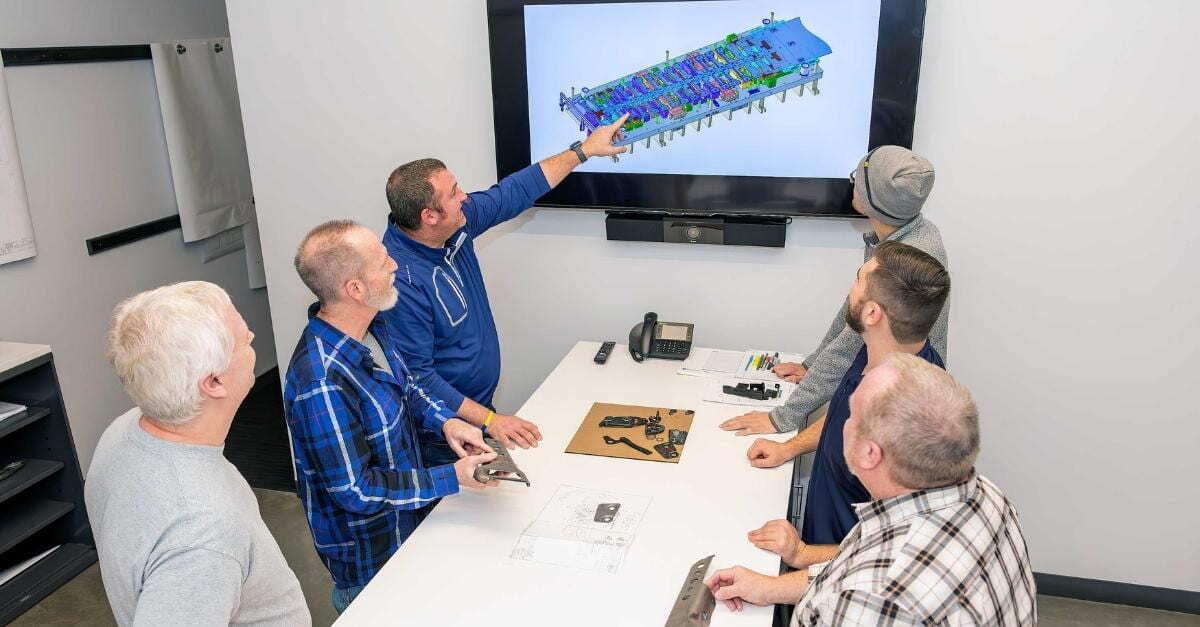Infrastructure components are the building blocks of modern construction. Whether supporting bridges, HVAC systems or industrial hardware, these parts must stand up to long-term wear, heavy loads and environmental stressors. Selecting the right material is the first — and arguably most important — step toward achieving that.
At ATD, we understand that material choice directly impacts not only performance but also cost efficiency and long-term reliability. It’s not just about what works today — it’s about what keeps working for years to come.
The Role of Infrastructure Components in Construction
From support brackets and fasteners to housings and pipe fittings, infrastructure components are relied on for their strength, consistency and resilience. These parts are used in environments where failure isn’t an option — tunnels, high-rise buildings, transportation systems and utility installations.
Each component must be built to withstand both mechanical and environmental stress. And that means selecting a material that can deliver strength, corrosion resistance and dimensional stability over time.
What Makes Material Selection So Critical
Material selection isn’t just about finding something strong — it’s about choosing a material that fits the job and performs reliably over time. The wrong choice can result in premature failure, costly downtime or even safety risks.
Key Factors in Material Selection:
- Load Requirements: Infrastructure parts must support structural and mechanical loads without deformation or fatigue.
- Corrosion Resistance: Outdoor and underground installations demand materials that hold up to moisture, chemicals and temperature swings.
- Thermal & Electrical Performance: For components involved in heating, ventilation or power systems, conductivity and heat resistance are essential.
- Cost & Availability: Construction projects often have tight budgets and deadlines. Material choice must balance performance with practical sourcing.
Why High-Strength Materials Matter
For most infrastructure applications, high-strength materials offer the best combination of durability and formability. At ATD, we frequently work with materials like:
- Galvanized Steel – Known for its corrosion resistance and toughness in outdoor environments
- Aluminum – Lightweight yet durable, ideal for reducing structural load
- Copper & Brass – Useful in applications requiring conductivity and reliable formability
These materials don’t just perform well, they also respond well to precision stamping, allowing us to manufacture parts with tight tolerances and repeatable quality.
ATD’s Engineering-First Approach to Material Selection
Every project we take on starts with understanding the application. ATD works closely with customers to assess where each part will be used, what forces it will face and what environmental conditions are involved.
By engaging early in the design process, our engineering team helps guide material selection in a way that minimizes risk, keeps production costs in check and ensures that each component performs as expected.
Because we manage everything from die setup to production and in-house inspection, we’re able to validate that the selected material is performing properly — long before a component ends up in the field.
Better Input, Better Output: Why Material Choice Pays Off
Choosing the right material upfront results in fewer quality issues, better part consistency and longer service life. It also reduces the need for secondary treatments and maintenance over time.
For example, a simple change from mild steel to galvanized steel in an outdoor HVAC bracket can prevent corrosion issues that would otherwise require field replacement every few years. It’s not just about strength — it’s about making informed choices that keep infrastructure functioning longer with fewer interruptions.
Build Smarter With ATD
Infrastructure projects carry high expectations and even higher costs when things go wrong. The best way to avoid those problems? Start with the right material.
ATD brings decades of experience in precision metal stamping for infrastructure applications. From initial consultation to production, we help construction and industrial teams choose materials that work hard and last longer.
Let’s talk about your next project. Whether you’re designing new components or reviewing existing specs, our team is ready to help you make the right call — starting with the material.


